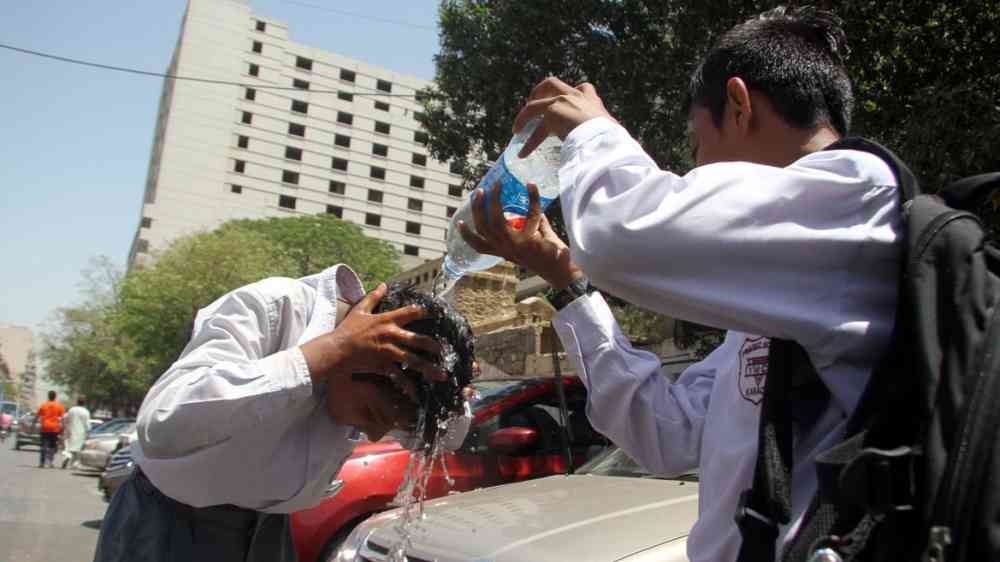Four times as many South Asian children could be exposed to extreme heatwaves in the 2050s - UNICEF

limate and environmental crises are projected to become even more widespread in South Asia, with four times as many children exposed to extreme heatwaves, according to a new UNICEF analysis released today.
In the decade of 2050-2059, twice as many children in South Asia are projected to be exposed to extreme river floods and 1.2 times more to extreme wildfires, compared to the 2000s, as per the analysis. *
As COP 29 comes to an end in Baku, Azerbaijan, the need for urgent action in South Asia is more pressing than ever before. Already, the climate crisis is dire in the region. In the past few months, devastating heatwaves, floods and toxic air pollution have disrupted the lives, health and education of millions of children and young people across South Asia. As per UNICEF's Children's Climate Risk Index, each one of the 659 million children under 18 years of age is affected by at least one climate-related hazard, shock, or stress.
"The area I come from in Pakistan is prone to frequent climate disasters. Climate change isn't only about floods, heat waves and droughts. It disrupts our lives, our education and our safety," said 14-year-old Zunaira Qayyum, a COP 29 youth delegate and UNICEF Climate Champion from Balochistan in Pakistan. "Families are forced to make difficult choices for their children when their villages are hit by floods or resources become scarce. Girls are often the first to miss out on school because families cannot afford education in times of crisis."
In addition, UNICEF finds that children and young people in South Asia have not been included substantially in national climate plans that guide the actions of countries to address climate change. A new UNICEF mapping of existing Nationally Determined Contributions (NDC) in South Asia reveals that while most countries refer to children, Nepal is the only one that is child-sensitive as it refers to the rights of children and young people.
Pakistan and Sri Lanka have started to address children in their NDCs. India makes references to future generations. In Bangladesh, young people have raised their voice to ensure children and young people are reflected strongly in the next iteration of the NDCs and UNICEF stands ready to support them. Afghanistan is currently revising the first NDC from 2016 in consultation with UN agencies and other stakeholders. But more needs to be done urgently and with increased ambition.
"Young people are counting on governments to deliver a child-sensitive NDC 3.0 that protects our future," said 24-year-old Bodh Maathura, UNICEF Sri Lanka Youth Advocate. "Young people are leading the fight for climate justice-mobilizing communities, raising awareness, and advocating for solutions. It is time for children and youth to be at the forefront in climate policy, not just to have their voices heard, but to be engaged as rightful partners in implementing and monitoring the NDCs."
The next revision for the NDCs for many countries is scheduled for early 2025 and presents a crucial opportunity to address the needs of children and young people. In the coming months, UNICEF is requesting countries that will update their NDCs to ensure that the rights of children and young people are included and that they are meaningfully engaged from start to finish.
"For young people from extremely climate-vulnerable nations like Maldives, the climate crisis is not an abstract concept or mere statistics in a report- it's an inescapable part of our daily lived reality," said 20-year-old Fathimath Raaia Shareef from Maldives. "We are not just advocating for climate action; we are fighting for our survival, our heritage and our future. It is time for decision-makers to not only listen to children and young people, but to recognize and celebrate that we are critical stakeholders in this fight. We are powerful agents of change."
Ahead of the 2025 deadline for the NDCs, UNICEF is calling on governments to:
- Foster climate policies that address the needs of children and young people;
- Significantly increase climate finance for children;
- Invite children and young people to the decision-making table;
- Prioritize the unique risks faced by girls, and children and young people who are from poor households, climate vulnerable areas, displaced or with disabilities;
- Collect and analyze data on the impact of climate change on children and young people;
- Ensure functional and reliable healthcare, education, and water and sanitation services for children and young people;
- Make early warning systems, disaster risk reduction measures as well as disaster management plans suitable for children and young people.
"The future of children and young people across South Asia is in jeopardy if their leaders fail to take urgent action on climate change now," said UNICEF Regional Director for South Asia, Sanjay Wijesekera. "As COP 29 ends, UNICEF joins a growing crescendo of voices calling for meaningful consultations with children and young people, NDCs that clearly articulate the needs of children, and sustained investments to adapt to climate change and mitigate future risks. Without efforts to create sustainable plans for generations, millions of children and young people will face unprecedented challenges in the decades ahead."